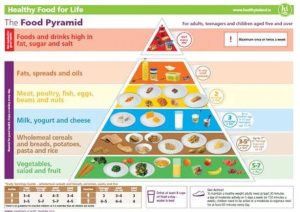What is processed food?
There is a useful classification of foods in relation to the level of processing during their manufacture
Overview of the NOVA Classification
Naturally occurring foods with no added salt, sugar, oils, or fats.
Milk, meat, eggs, fish, poultry, plain unsweetened yogurt, beans, fresh, frozen, or dried fruits and vegetables, oats, grits, pasta, rice.
Industrially created food products created with the addition of multiple ingredients that may include some Group 2 ingredients as well as additives to enhance the taste and/or convenience of the product, such as hydrolyzed proteins, soy protein isolate, maltodextrin, high fructose corn syrup, stabilizers, flavor enhancers, non-sugar sweeteners, and processing aids such as stabilizers and bulking and anti-bulking agents.
Commercially produced breads, rolls, cakes, cookies, donuts, breakfast cereals, soy burgers, flavored yogurts, ready-to-heat meals, such as frozen pizzas, soft drinks, and candy.
What about UPF?
As we saw above, group 4 of Nova classification contains UPF foods. There is a wealth of literature supporting the view that UPF are detrimental to human health.
However, there are (still!) scientists that they don’t (completely) reject the (non) “nutritional value” of UPF.
The latest example is this opinion article at the Irish Times, today. [The article is behind a pay wall – but you can read it here].
The author of the article is Prof Gibney. In her views, not all UPF are “rubbish” food. The eminent Professor didn’t express clearly her view on Ultra Processed Foods (UPF). However, the negative impact on human health of UPF has been widely studied. On the other hand, the Irish food pyramid is archaic and scientifically wrong, as it puts at the same category all fats and oil (olive oil with sunflower oil and butter!) and all meats together (red meat, poultry and fish!).
What is needed going forward?
The public needs clear information and we are failing to do so.
What we have to do actually is this:
- let’s agree on the (non) nutritional value of UPF,
- let’s use our academic positions to promote good science and not pseudoscience,
- let’s throw to the bin the Irish food pyramid,
- let’s visit schools and talk to pupils/students about their diet.
P.S. A couple of years ago, I visited 6th class in a primary school in Limerick (ages 11-12). At the break, their teacher told her students to get their lunch boxes out and have lunch. I was appalled when I saw a young student having in his lunch box just ten slices of (UPF!) salami…
We have an ethical obligation to start talking to the wider community and not only in “Conferences” where academics talk to academics while they ignore the real societal problems in relation to nutrition and health.
